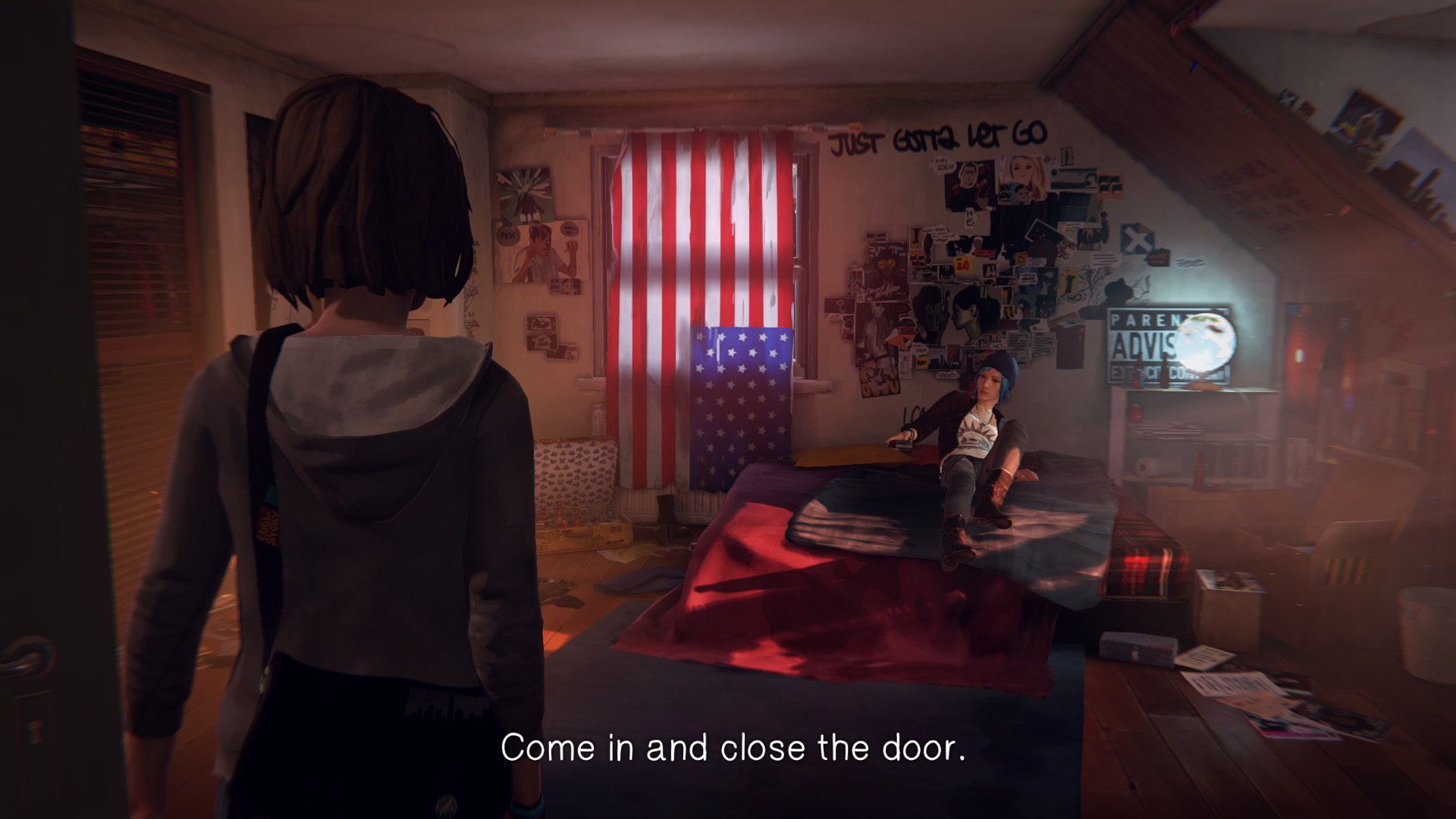Our Verdict
Life is Strange elegantly meshes time-travelling with nostalgia-riddled teen drama, producing a sympathetic debut.
PC Gamer's got your back
What is it Five part episodic suburban adventure game.
Influenced by Telltale Games, Butterfly Effect
Alternatively Anything by Telltale, Day of the Tentacle
DRM Steam
Developer Dontnod Entertainment
Publisher Square Enix
Price £3.99 / $4.99 for episode 1
Multiplayer No
Link Life is Strange site
Episodic time-travelling teenager simulator Life is Strange is, as its adolescent cast might put it, "hella" cool. Set within the lush Pacific Northwest, it shoes you in the loafers of one Maxine Caulfield, a gawky teen freshly returned from the big city. She's a photophile obsessed with old cameras, an admirer of skater dudes, and just ... awkward. Charmingly awkward, really. Much like the rest of Life is Strange.
The game doesn't wait to hit you with the fantastical. After a freak meeting with a colossal twister and a nostalgic introduction straight from Saved by the Bell, Max finds herself in a bathroom. A boy barges in. She hides. Another girl follows. Quickly, things escalate, and Max witnesses a murder and gains her time-travelling powers. Life is definitely strange for Maxine Caulfield.
Like most adventure games, the controls are pretty straightforward. You navigate with the standard WASD keys, and use pop-up verbs to interact with objects of interest highlighted in white squiggles. Time-travelling in Life is Strange is equally simple—no arcane invocations required. Just right-click to turn back the clock, hold the shift key to accelerate the process, and use the control button to get you to the desired point even faster.
The delightful thing about Max’s talent is how she makes use of it. Where another might ride off to battle Hitler, she mostly does what any average teenager would do: she uses her power for cool. You can replay conversations to gain access to portfolios, impress teachers, and even pilot drones. While Max’s preternatural abilities do play a pivotal role in the game’s narrative and puzzles, it’s wonderful that developers Dontnod Entertainment allow for its use in mundane situations.

For a game about time travel, there’s a surprising amount of the ordinary in Life is Strange, but it keeps normality interesting. When you start the game, Max has already been attending Blackwell for about a month, but she’s far from settled. Her private thoughts about her peers poignantly reflect her fear of rejection, and give her space to express the occasional moment of age-appropriate spite. Mostly, though, Max is just a ball of nerves. She’s anxious about everything. Her abilities, the complexities of campus politics, whether the world outside of her camera-filled cocoon is safe to explore. Her insecurity exemplifies the game’s greatest strength: its portrayal of relatable teenagers.
The game is rife with familiar stereotypes, filtered through the lens of a photography-centric syllabus. Max’s schoolmates are passionate, gossipy, vulgar, frantically vacillating from one conclusion to the next, and breathlessly alive. They preen. They prance. Though Dontnod isn’t always on point with its usage of slang and lip-synching, this enrolment in Nostalgia High remains largely superb.
That said, Life is Strange is more than just a light-hearted romp. A constant urgency hums in the background. On top of the tornado in the beginning, there’s also the mystery of a missing teenager. Her face is everywhere, emblazoned on the posters spread through the town. And yet, almost no one except Max appears interested in her disappearance, an unsettling fact that quickly drives our heroine to investigation.

If you take the time to properly explore your environment, you’ll unearth some genuinely heavy themes: murder, illegal surveillance, teen pregnancy, and more. There’s one scene in particular, towards the end, that I found absolutely gut-wrenching—enough to leave me sick to the stomach. Though that moment is inescapable, many others can be missed, forgotten as you rush off to fulfil Max's life goals. It’s a reminder that life isn’t comprised of singular events, but of a string of interlocking near-misses. Even with Max’s powers to rewrite history, she can’t make herself a perfect future.
Life is Strange has a lot of potential. The ending makes we think Dontnod is setting up for more action sequences, something that both delights and worries. For me, the game shone brightest when it was being subtle. Yes, time travelling is great and all but being able to orchestrate the perfect prank? Priceless. More interactive movie than a traditional game, Life is Strange won’t break your mind with its puzzles but it is certainly in danger of breaking your heart.
Life is Strange elegantly meshes time-travelling with nostalgia-riddled teen drama, producing a sympathetic debut.


